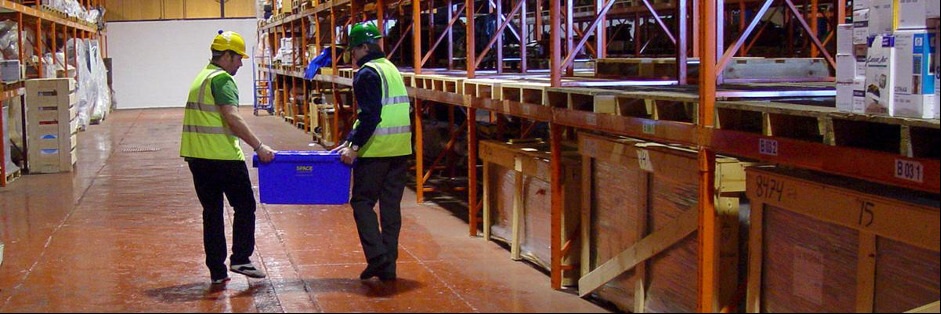Tops Tips to Avoid Back Injuries In The Workplace

8.9 million days of work were lost in 2016/17 due to back, neck and muscle problems, or Work-Related Musculoskeletal Disorders (WRMSDs), according to the Health & Safety Executive (HSE).
WRMSDs can be sub divided into the more specific and recognised body regions of the back, upper limbs, and lower limb disorders.
The table below from the HSE shows industries with higher than average rates of musculoskeletal disorders, averaged 2016/17-2018/19:
Expert Insight:
Stuart Halliday CMIOSH a Chartered safety and health practitioner and Offshore Medic, works with the Mintra team to advise on our Health and Safety courses and ensures that course content is compliant with industry standards and relevant to our end users. He gives us his expert advice and top tips on best practice manual handling:
“Unfortunately, I have experienced incidents in manual handling many times. One that comes to mind was a job that required a large blank plate to be taken from one part of a work site to another for use on the plant. A JCB was due to come in the next morning to move the blank due to its size and weight. When I returned to site the next morning, the blank had been put into position without the use of any mechanical aids. In this case nobody was injured but it is an excellent example of a near miss and those involved were incredibly lucky. There are countless other examples where others were not so lucky.
Had the individuals asked the questions detailed in the training material, they would have identified that the weight of the blank was far too heavy to move by hand. This ties into site culture, which is another topic, but I like to think that the right instruction and training would at least have had the work party question what they were doing.
WRMSDs are a significant cause of absence in the industry and I feel that sometimes manual handling can be overlooked when planning tasks, because more focus is given to what are considered higher risk activities.”

Best Practice Manual Handling to Minimise Risk:
- Minimise Risk by Elimination - Fundamentally we need to look at eliminating these manual handling tasks where we can. Engineering solutions have to be assessed. Ergonomics must be considered during the design phase of any construction or modification project.
- Call for Help - Never be afraid to call a time out for safety if you think your health is being compromised on this or any other issue.
- Don’t Be Afraid to Question - Ask the question, “Do we need to manually lift this?” Air your concerns if you feel the lift may cause injury.
- Risk Assessment - Speak to anyone who has suffered from back pain and try to understand the discomfort that these injuries leave people with. Look after yourself by ensuring you adequately risk assess manual handling activities and implement the controls identified.
- Office Ergonomics – You don’t have to be in a physical job to suffer these injuries. Most deskbound workers are not adequately addressing their health risks. Preventative measures, such as keeping chairs, desks and computers at the right height, are often neglected. Many office workers make repetitive movements and if the office ergonomics are not corrected, Repetitive Strain Injury (RSI) can result.
- Take A Break - Allowing people to move around and take breaks is essential.
Next Steps:
Visit the HSE toolbox for a brief guide and top tips on Manual Handling in the Workplace:
http://www.hse.gov.uk/toolbox/manual.htm
The Mintra ‘Manual Handling’ course is a good reminder for everyone on the importance of using correct techniques and asking the question, “Do we need to manually lift this?”
Learn more about ‘Manual Handling’ by completing our accredited online manual handling course.
Insights & News
At Mintra, we're so much more than just a team—we're a force driving innovation and excellence in maritime training across Europe.
We’re excited to be taking the stage at one of Europe’s leading showcases of organisational learning.
We are delighted to share the exciting news that our People and Culture team has been shortlisted for the prestigious cHeRries Awards!
